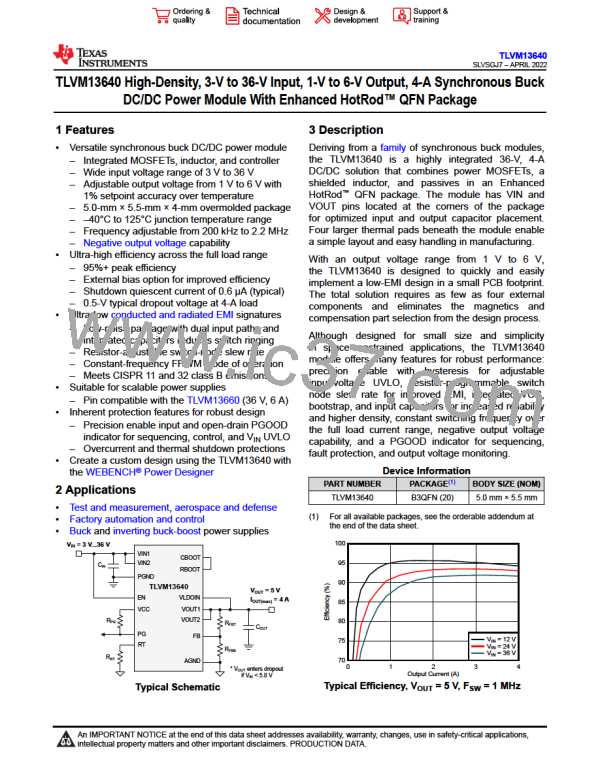TLVM13640
SLVSGJ7 – APRIL 2022
www.ti.com
10 Power Supply Recommendations
The TLVM13640 buck module is designed to operate over a wide input voltage range of 3 V to 36 V. The
characteristics of the input supply must be compatible with the Absolute Maximum Ratings and Recommended
Operating Conditions in this data sheet. In addition, the input supply must be capable of delivering the required
input current to the loaded regulator circuit. Estimate the average input current with Equation 10.
VOUT ∂IOUT
IIN
=
V ∂ h
IN
(10)
where
•
η is the efficiency.
If the module is connected to an input supply through long wires or PCB traces with a large impedance, take
special care to achieve stable performance. The parasitic inductance and resistance of the input cables can
have an adverse affect on module operation. More specifically, the parasitic inductance in combination with the
low-ESR ceramic input capacitors form an underdamped resonant circuit, possibly resulting in instability, voltage
transients, or both, each time the input supply is cycled ON and OFF. The parasitic resistance causes the input
voltage to dip during a load transient. If the module is operating close to the minimum input voltage, this dip can
cause false UVLO triggering and a system reset.
The best way to solve such issues is to reduce the distance from the input supply to the module and use an
electrolytic input capacitor in parallel with the ceramics. The moderate ESR of the electrolytic capacitor helps
damp the input resonant circuit and reduce any overshoot or undershoot at the input. A capacitance in the range
of 47 μF to 100 μF is usually sufficient to provide input parallel damping and helps hold the input voltage steady
during large load transients. A typical ESR of 0.1 Ω to 0.4 Ω provides enough damping for most input circuit
configurations.
Copyright © 2022 Texas Instruments Incorporated
28
Submit Document Feedback
Product Folder Links: TLVM13640

 TI [ TEXAS INSTRUMENTS ]
TI [ TEXAS INSTRUMENTS ]